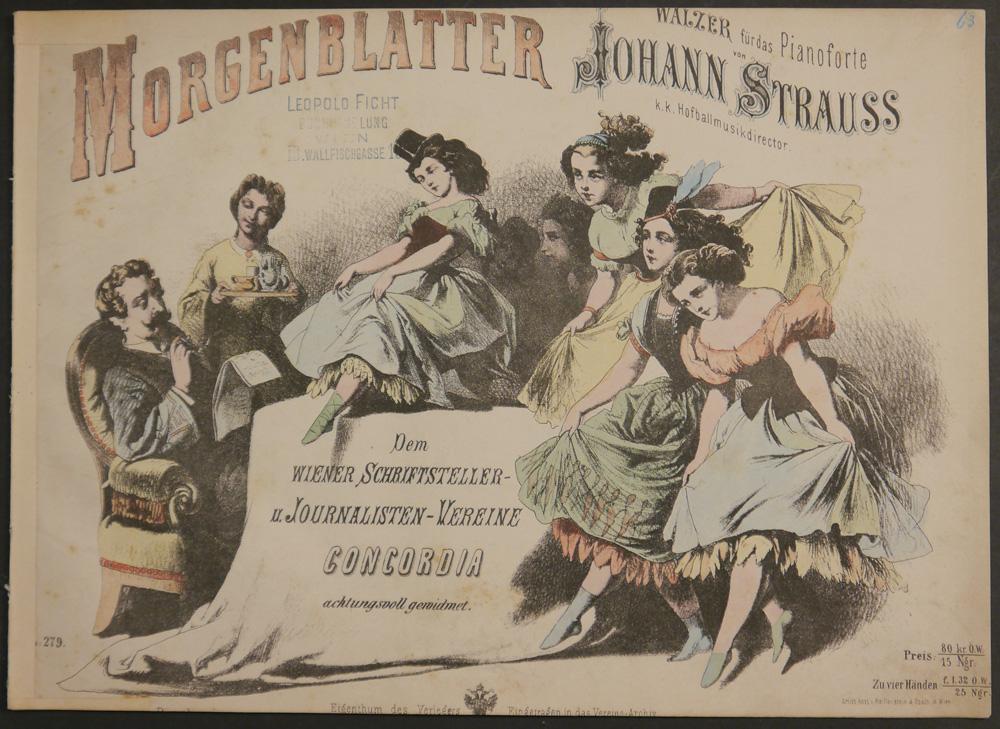|
|
|
|
|
|
This really hurt Strauss, the more so because after a splendid premiere on 19 January 1863, Concordia Ball was set to become the ultimate highlight of Vienna’s glittering ball season. The Concordia Press Club had been founded four years earlier as an independent platform for journalism, tasked with safeguarding the recently achieved right to press freedom and protecting journalists. Ever since then, the Concordia Press Club has influenced media policies and brought together the community of those who care about journalism, including through the highly respected annual Concordia Ball.
The influential paper Morgenpost described the Concordia Ball as the „crown of the elite balls“, noting that “Many came to see, and others came to be seen”. Indeed, ministers and diplomats rubbed shoulders with artists and intellectuals, star actors and newspaper editors. Crown Prince Rudolf was a regular visitor, and Vienna’s leading composers wrote dance music especially for the ball: The Strauss brothers premiered more than 40 waltzes at the Concordia Ball, but Franz Lehár, Carl Millöcker, Franz von Suppé and Carl Michael Ziehrer also composed for the popular ball. This legendary ball survived the end of the monarchy in 1918, only to perish in the following decades, alongside Austria's freedom: It was suspended under the authoritarian governments that preceded World War II, and following Austria's annexation into the German Reich in 1938 the Concordia Press Club had to be dissolved. In 1960, Concordia President Rudolf Kalmar found a dedicated supporter in Vienna’s Vice Mayor Hans Mandl, relocated the ball to the spectacular ambience of Vienna’s City Hall and scheduled it as the highlight of the Wiener Festwochen spring festival, in safe distance from the yearly ball event overload during carnival. |
|

